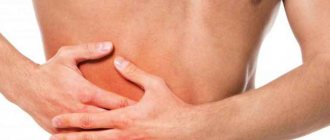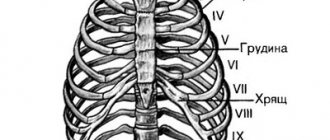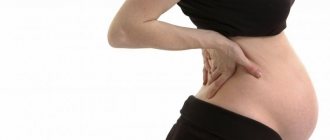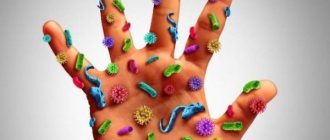Causes of pain in the left side
Pain in the left side can be functional or occur due to inflammation. To make a diagnosis, you need to have an idea of what organs may be involved in this process.
Subcostal area
Here are the left lobe of the liver, pancreas, stomach, spleen, part of the colon, small intestine, lower part of the lungs, diaphragm, heart. Unpleasant sensations in this area can be caused by diseases of the heart, lungs (pneumonia and pleurisy), stomach, spleen, pancreas, duodenum, intercostal neuralgia, diaphragmatic hernia. The digestive organs suffer not only from bacteria , but also from unhealthy diet, stress, and bad habits.
A rupture or bruise of the spleen is especially dangerous. The pain is sharp, characterized by the appearance of a bruise around the navel, a hematoma in the left side of the abdomen, colic can radiate to the back. In this case, it is necessary to call an ambulance.
Inflammation of the lungs can also be accompanied by dull pain in the left hypochondrium , aggravated by coughing. With pleurisy, they intensify not only during coughing, but also when changing body position and even when breathing.
Intercostal neuralgia is characterized by sharp pain in the side, which manifests itself even with the slightest movement or inhalation. Acute colic is observed with osteochondrosis and neuralgia, myalgia and injuries.
Stitching pain (usually in the muscles) can occur if the load is distributed incorrectly or if there is no preliminary warm-up before training.
Left side
Here are the intestines, kidneys, ureter, spleen, pancreas, stomach, genitals (uterus and ovaries in women, prostate and testes, testes in men). Most of the discomfort in this area is associated with the intestines.
Possible causes of pain in the left side:
- Colitis is accompanied by pain from flatulence, it is acute, cramping, and often occurs after eating. They may also be accompanied by false urges to empty the bowels, diarrhea, sometimes with mucus and blood.
- Nonspecific ulcerative colitis - pain is accompanied by general intoxication.
- Intestinal obstruction – pain does not depend on food intake and can occur at any time of the day. Their character is sharp and combative. If help is not provided, they may subside in 2-3 days. But this is not a recovery, but a complication. The clinical picture is complemented by constipation, bloating and asymmetry of the abdomen, nausea and repeated vomiting.
- Colon cancer - in advanced cases.
- Diseases of the genitourinary system - inflammation of the uterus and appendages, sexually transmitted diseases, intestinal infections, atypical appendicitis, cystitis, urethritis, endometriosis, ovarian cysts, tumors, ectopic pregnancy and menstrual irregularities. These pains can radiate to the lower back, anus and groin. Emergencies include torsion of an ovarian cyst and ectopic pregnancy. These pathologies require immediate hospitalization.
Pain in the hypochondrium in women
Unlike men, in women such sensations may be a consequence of physiological processes. Sometimes it stings in the left side during pregnancy, in the period before menstruation.
Why it stings in the left side of the lower abdomen during pregnancy can be easily explained by the physiology of the expectant mother. A number of organs located in the left side of the lower abdomen are subject to pressure from the enlarging uterus. Therefore, during pregnancy, especially in the last stages, periodic pain is observed, both in the upper and lower parts of the hypochondrium.
It happens that before the onset of menstruation, women produce a lot of sex hormones in their bodies, resulting in a spasm of the bile ducts. The woman notes nausea and bloating, pain in the left side of the abdomen. In this case, you need to consult a gynecologist.
Localization and nature of pain
Pain is divided according to the mechanism of its occurrence, as well as according to its characteristics. They can feel like cutting, stabbing, dull and sharp, drilling, bursting, shooting, aching and encircling.
Classification of pain by source of origin:
- Visceral - appears due to inflammatory processes, injuries and bleeding from internal organs. It is associated with peristalsis of the intestines and stomach, and occurs during spasms or strains of the muscles of these organs.
- Neurological – occurs when the nerve trunks become inflamed.
- Somatic – constant and clearly localized. The pain is sharp, cutting, appears due to irritation of the peritoneum, for example, with peritonitis.
- Reflected - spreads from distant organs along nerve fibers due to the irradiation of unpleasant sensations. It does not arise in the organs of the left side, but comes here. For example, with left-sided lower lobe pneumonia, pleurisy, heart attack, liver disease.
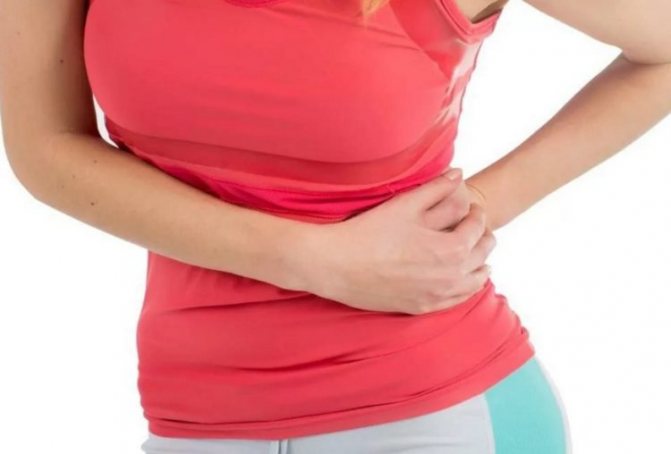
Classification by pain intensity:
- Acute – intense, cannot be relieved with analgesics.
- Chronic – periodically occurring low-intensity unpleasant sensations that are relieved by analgesics.
Back pain occurs with pleurisy and inflammation of the lung. Lower back pain may indicate kidney pathology.
Pain after eating is usually associated with digestion. They are characterized as heaviness, discomfort and tingling, and may be accompanied by fever, chills, nausea and gas formation. This may also indicate the development of disorders in the pancreas . More often than not, all this is associated with poor nutrition.
When there is aching and pulling on the left side below the ribs in front, this is a symptom of sluggish duodenitis (inflammation of the duodenum).
If it stings on the side under the left rib during training or strength training, then this indicates insufficient warm-up. The body simply did not have time to prepare for the increase in blood circulation. They pass quickly and have no consequences.
When the aorta ruptures, the pain is sudden, severe in the abdomen or from the back. Immediately after this, collapse occurs - a sharp drop in pressure. A person can die in a matter of minutes from bleeding. You need to call an ambulance without wasting a second.
Stones and sand in the urinary tract cause sharp pain because the tissue and capsule of the organ are stretched, pressure increases and pain occurs, mainly under the ribs in the back.
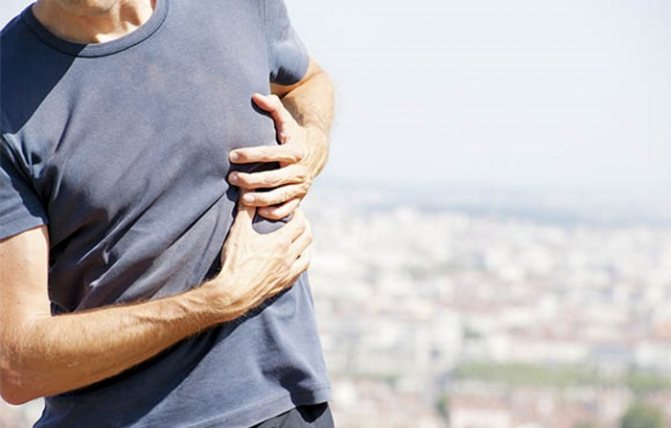
The left side hurts under the ribs on the side, what could it be?
Pain under the ribs in the left side occurs in acute and chronic diseases of internal organs, nerves, and muscles.
In the projection of the left hypochondrium are the spleen, the left flexure of the colon, the fundus of the stomach, the tail of the pancreas, the left part of the dome of the diaphragm, intercostal nerves, the lower lobe of the left lung and the pleura.
The nature of the pain syndrome helps to distinguish one disease from another, prescribe a diagnostic examination and determine treatment tactics.
The left side hurts under the ribs on the side, what could it be? We will discuss it in this material.
Types of pain on the side in the left hypochondrium
Pain sensations may differ in intensity, time of occurrence, dependence on physical activity, breathing or food intake.
Some types of pain syndrome indicate an exacerbation of chronic processes in the body and require adequate therapy. Acute pain in the left hypochondrium with a high degree of intensity develops in emergency conditions.
Such patients must be immediately transported to the hospital for surgery and resuscitation.
According to the intensity of the pain syndrome, there are:
- acute - constant intense pain, causing deep emotional experiences, poorly relieved by painkillers;
- chronic – periodic pain of low intensity, which is relieved with painkillers.
According to the nature of the pain sensations there are:
- piercing;
- cutting;
- drilling;
- stupid;
- aching;
- bursting;
- shooting;
- encircling.
According to the source of pain, there are:
- visceral – occur as a result of inflammatory processes, injuries and bleeding from internal organs;
- muscular - arise as a result of inflammation or traumatic rupture of the muscles of the anterior abdominal wall or chest;
- neurological - occurs when the nerve trunks become inflamed;
- peritoneal – develop due to irritation of the peritoneum (“acute” abdomen);
- reflected - spread to the left hypochondrium from distant organs along nerve fibers and require differential diagnosis.
If acute, unbearable pain occurs, you must call an ambulance. In case of chronic pain syndrome, it is recommended to consult a doctor in a timely manner for diagnosis of the disease and treatment.
Spleen diseases
The spleen is a hematopoietic organ. Inflammation is characterized by a rapid increase in size of the spleen (splenomegaly), and with injuries there is a high risk of rupture of the organ capsule with heavy bleeding. Splenomegaly occurs with mononucleosis, acute and chronic forms of leukemia, anemia, hypersplenism, hepatitis and cirrhosis of the liver, ARVI.
Diseases of the organ are characterized by bursting, pressing pain in the left hypochondrium, which does not depend on physical activity and food intake. When the spleen ruptures, a bluish area forms around the navel, dizziness, nausea, and weakness appear. The pain at the time of rupture of an organ of a traumatic or infectious nature is acute and cutting in nature.
Intestinal diseases
Pathology of the small intestine leads to visceral or referred pain in the left side. A tumor of the left colon in the later stages of the disease causes aching pain that intensifies 2-3 hours after eating.
The pain syndrome occurs against a background of weakness, weight loss, and aversion to food. Enteritis is characterized by periodic dull pain in the left side, which is accompanied by constipation and diarrhea, a feeling of transfusion in the abdomen, and increased gas formation.
With ulcerative colitis and Crohn's disease, blood appears in the stool.
Stomach diseases
Gastritis and gastric ulcer cause pain in the epigastric region and in the left hypochondrium. In the case of gastritis, the pain is stabbing, drilling, shooting, and intensifies after eating spicy and fatty foods. Characterized by a feeling of heaviness in the stomach, belching rotten or sour, heartburn, nausea.
Peptic ulcer disease manifests itself with hunger and night pain (increased discomfort on an empty stomach), after eating, the pain syndrome decreases. Characterized by vomiting mixed with blood, loss of body weight, and asthenia.
Perforation of the ulcer is accompanied by dagger-like acute pain, vomiting, severe weakness, retardation of consciousness, and muscle tension in the anterior abdominal wall.
This is an acute condition requiring emergency medical attention and surgery.
Stomach cancer causes aversion to food (usually meat products), constant aching pain in the epigastrium and left hypochondrium, weight loss, weakness, and anemia. When a tumor grows into large nerve trunks, an acute pain syndrome occurs, which can only be relieved with narcotic analgesics.
Pancreatic diseases
Inflammation of the pancreas is called pancreatitis. Chronic pancreatitis causes indigestion and periodic pain in the left side.
Characterized by diarrhea, greasy stools with lumps of undigested food, and flatulence. Pain of a stabbing, bursting, shooting nature occurs 1-1.5 hours after eating.
Often the pain syndrome becomes girdling - spasmodic pain compresses the left and right hypochondrium in a “ring”.
Acute pancreatitis is a dangerous condition with a high mortality rate (up to 60%).
Acute pain of high intensity appears, nausea, vomiting without relief, increased body temperature up to 39 degrees, chills, loss of appetite, loose, frequent stools.
The disease usually develops after heavy intake of spicy or fatty foods or alcohol abuse. If acute pancreatitis occurs, the patient must be urgently taken to the hospital for diagnosis and treatment.
Pancreatic cancer is asymptomatic for a long time. Sometimes loose stools, nausea, and vomiting appear after a heavy meal.
The first sign of the disease is often yellowing of the skin and sclera as a result of compression of the bile ducts by the tumor. Pain in the left hypochondrium occurs in the later stages of the disease, constantly or periodically.
The pain syndrome is dull, bursting, does not depend on food intake, less often intense - due to the germination of a tumor of the nerve trunks. Often accompanied by vomiting and refusal to eat.
Muscle disease
Muscle inflammation - myositis can be accompanied by pain in the left side. The pain syndrome is shooting and cramping, intensifies when muscle fibers are stretched while bending in the opposite direction.
When palpating the affected muscles, a painful lump is determined. Inflammation of the diaphragm most often occurs with congenital or acquired hernias. Dull or burning pain develops when food passes through the esophagus and bends the body after eating.
Pain syndrome usually occurs behind the sternum, but can spread to the left hypochondrium.
Left lung disease
Pain in the left side may appear with left-sided lower lobe pneumonia involving the pleura in the pathological process. There is a cutting, stabbing, boring pain in the left hypochondrium, which intensifies at the height of inspiration. Pneumonia is characterized by an increase in temperature up to 40 degrees, shortness of breath, weakness, dry or productive cough, wheezing when listening to breathing.
Dry pleurisy causes pain at the height of inspiration, while there are no symptoms from the lungs. A tumor of the left lung with tumor extension to the pleura is characterized by pain in the left side when breathing, rapid loss of body weight, hemoptysis, weakness and drowsiness.
Heart diseases
During myocardial infarction, pain occurs in the left half of the chest, between the shoulder blades, and radiates to the arm on the affected side. The atypical course of the disease leads to referred pain in the left hypochondrium.
Sharp, cramping, shooting pains in the left side of high intensity, shortness of breath, fear of death, palpitations, numbness of the left arm are noted. Taking nitroglycerin or painkillers does not bring relief.
If pain occurs in the left hypochondrium, you should consult a doctor for examination and treatment. Timely consultation with a specialist reduces the risk of disease progression and complications.
Source: https://mag.103.ua/simptomy/17823-bolit-levyj-bok-pod-rebrami-sboku/
The left side hurts in a woman and a man: what are the differences?
In men, this may be a consequence of inflammation in the genitourinary system. As a rule, this is accompanied by an increase in temperature.
Sharp pain may indicate:
- prostatitis;
- vesiculitis
- inflammation in the bladder, urethra;
- stones in the prostate gland;
- malignant tumors;
- inguinal hernia;
- gonorrhea, chlamydia, trichomoniasis.
In women with endometriosis or an ovarian cyst, there is nagging pain (both on the left and on the right). Similar to menstrual ones, but appear at any time. And the periods themselves lengthen and become more painful.
Nagging pain in the lower abdomen in women indicates problems with the left ovary . They get worse when walking. Although this may be due to inflammation of the fallopian tubes and uterine mucosa, and oncology.
In women, pain in the left side of the lower abdomen may occur during pregnancy due to intestinal displacement by the growing uterus. There is no danger if it does not become acute and is not accompanied by spotting and bloody discharge.
What and why colitis on the left under the ribs
Pain under the ribs on the left side indicates damage:
- hearts;
- spleen;
- stomach;
- pancreas;
- lungs;
- kidneys;
- left side of the diaphragm;
- ribs;
- spine.
Often, pain in the left side is accompanied by diseases of the gastrointestinal tract (GIT).
Peptic ulcers, gastritis (inflammation of the gastric mucosa), cholecystitis (inflammation of the gallbladder), pancreatitis (inflammation of the pancreas), colitis are manifested by aching, dull pain in the upper abdomen and hypochondrium. During exacerbations of diseases, sharp, stabbing, cutting pains appear, and the patient’s well-being sharply worsens.
With gastritis in the acute stage, the following appear:
- heartburn;
- belching;
- nausea;
- bothered by stomach pain after eating;
- a feeling of heaviness in the left hypochondrium or a “stone” in the stomach;
- vomit;
- constipation or diarrhea.
The main symptom of exacerbation of a gastric ulcer is intense, sharp, acute pain, which is accompanied by tension in the abdominal muscles, increased sweating, nausea, and sour vomiting. The sensations are localized in the pit of the stomach and radiate to the right or left hypochondrium and back.
In case of sudden “dagger” pain in the abdomen, fever, or sudden tension in the abdominal wall, the patient should be immediately hospitalized in the surgical department. These symptoms indicate perforation of the ulcer (the formation of a through hole in the gastric wall), which leads to peritonitis, which can be fatal.
Pain in the stomach area on the left side, which is accompanied by weakness, loss of consciousness, drop in pressure, the appearance of blood in the vomit, melena (tar-like black stool) indicates bleeding and requires hospital treatment.
Acute inflammation of the pancreas occurs with girdle pain in the right or left hypochondrium. It is intense, cannot be relieved with medications, and can provoke loss of consciousness and painful shock. Associated symptoms are lack of appetite and vomiting, which does not bring relief.
The vomit contains stomach contents. Characterized by hyperthermia (temperature above 38 °C), rapid heartbeat, drop in blood pressure, pale or bluish skin, diarrhea, weight loss. The pancreas enlarges and swells, which leads to compression of the bile ducts and jaundice.
In the absence of medical care, exacerbation of pancreatitis ends in death.
Aching pain on the left under the ribs may indicate duodenitis (inflammation of the duodenum), colitis (inflammatory process in the mucous membrane of the large intestine). These diseases are accompanied by:
- nausea;
- vomiting;
- rumbling in the stomach;
- diarrhea mixed with mucus and blood.
With ulcerative forms of colitis, severe bleeding, frequent “false” urges to defecate, fever, pain in the left side, weight loss, and weakness may occur.
Oncological diseases of the digestive organs can also be accompanied by pain. They often do not depend on food intake, are constantly disturbing, exhaust the patient, and can acquire a cutting, sharp character, with a feeling of fullness.
Pathologies of the diaphragm
Due to weakening of the diaphragm muscles due to obesity, age-related changes, constant physical activity, and heavy lifting, a hernia can form. The opening through which the esophagus passes widens.
This is accompanied by intense heartburn, belching, regurgitation, pain in the sternum (more on the left or under the ribs), which imitates heart disease.
There is a feeling of a lump in the throat, difficulty swallowing, which creates some discomfort while eating.
If your left side hurts, what should be the algorithm of action?
Even if the pain under the ribs, on the left, below, in the navel area or in the center quickly subsides, but is accompanied by vomiting, burning, fever, an ambulance should definitely be called. Any intake of food, water, or pills is not advisable. All this can blur the picture, complicating the diagnosis.
If a rare pain syndrome occurs, you can take painkillers. However, this method is optimal only if the pain is not accompanied by acute symptoms, such as fever, chills and nausea.
Important! Seeing a doctor is mandatory if the pain recurs and all the remedies used are useless.
Prevention
As for prevention, the basis is a proper balanced diet. It is advisable to minimize hot and spicy foods. Legumes can irritate the mucous membranes and cause flatulence.
It is important to give up bad habits such as smoking and alcohol , get proper rest and get a good night's sleep. Any training should be carried out only 1.5-2 hours after eating.
To avoid gynecological problems, women need to treat existing inflammation of the genital organs and undergo regular examinations by a gynecologist.
Doctors' advice
Doctors strongly recommend:
- Do not engage in self-diagnosis and treatment.
- In case of acute pain, do not endure it, but call an ambulance. This is the case when it is better to be safe.
- If the pain is not intense, dull, then it is better to consult a doctor at the clinic. You need to describe all your sensations without any embarrassment.
There is no need to assume that the pain in the left side will go away on its own; it is better to consult a doctor and identify the true cause. Taking painkillers gives only a temporary effect, but does not eliminate the disease itself. If pain occurs suddenly and lasts more than half an hour, it is better to play it safe and call an ambulance.

